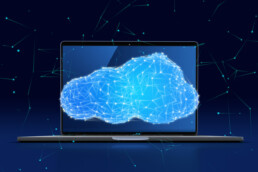IT Compliance in Orlando: Get the Help You Need to Stay Compliant
Orlando business leaders know the importance of staying up to date on IT compliance. It’s a necessity that must remain top of mind regardless of the IT compliance challenges it poses for your team.
With a wide variety of cyberthreats circulating, governing bodies continuously update policies for data storage and security to minimize risks to businesses, investors and consumers alike. And it’s not just enterprise-level businesses in danger. Did you know that small businesses are a prime target for cybercriminals? With more than half of SMBs closing within six months of a cyberattack, it’s critical to stay current with the latest IT compliance policies.
Here are the top four compliance standards we can help you maintain:
GDPR
The European Union (EU) is leading the world in protecting the information of its citizens with the General Data Protection Regulation (GDPR). Unlike current laws in the U.S., all businesses that gather, store and transmit the data of EU citizens must abide by GDPR compliance. In order to conduct business in EU countries or with EU citizens, organizations must maintain IT compliance with GDPR regulatory standards.
One of GDPR requirements includes a mandate that businesses must allow individuals to opt-in for data collection with the choice to opt-out at any time.
PCI DSS
Payment Card Industry Data Security Standard (PCI DSS) protects the storage and transmission of credit, debit and cash card information by businesses. Compliance with PCI DSS creates a foundation of benefits for both you and your customers.
You can meet PCI DSS compliance standards, provide your customers with active data protection and seek out potential threats before they arise — all at the same time. This is done by building and maintaining secure networks and systems, implementing a vulnerability protection program and conducting regular network monitoring and testing.
Documented information security policies and access control systems can also go a long way in protecting your organization’s data.
SOX
Sarbanes-Oxley Act (SOX) compliance focuses on protecting the investor. If you’re an officer of a publicly traded company or about to offer an IPO, this applies to you.
SOX mandates that companies are transparent with their financial information for shareholders. The annual audits that go along with SOX compliance rely on data-secure financial reporting. This requires complex, formal internal control processes over IT infrastructure and applications.
HIPAA
The Health Insurance Portability and Accountability Act (HIPAA) outlines the protection of medical records at all levels of storage and transmission by a business associate. This means that any information collected from patients must be properly managed, transferred and accessed.
Privacy, security and notification are key steps to HIPAA compliance. Privacy ensures that no personal medical records can be disclosed without patient consent. Security focuses on ePHI (electronic protected health information). Administrative, physical and technical safeguards are put in place to ensure compliance standards are met. Notification refers to the process of informing all parties involved in any confidential breach in a timely manner.
How We Help
Sentry IT Solutions implements compliance management solutions that actively safeguard confidential data. We also offer IT compliance training to educate your employees on the latest regulations. Training ensures the proper measures are in place to minimize the risk of compromising information.
By partnering with Sentry IT Solutions, we’ll get you compliant without the hassle and headache of doing it yourself.
While businesses have numerous focuses beyond security, it’s vital to the success of your Orlando-based business that IT compliance is maintained. We know it’s not always easy. Take advantage of our expertise to maintain adherence to the ever-changing laws and codes. We keep track of your compliance and safety 24/7 so you don’t have to.
Contact us to learn how we can help your business with IT compliance challenges in Orlando today.
Five Threats to Email Security
Email is essential to the success of any business. It has become the fastest, easiest way of communicating and affords you the opportunity to represent your business in a positive light. However, without proper security, your email can serve as an entry point for hackers to compromise your data and damage your network.
Nearly 100 percent of malware comes through email, so it is important your network is safeguarded with strong enough email security to withstand an attack and a staff that knows how to spot and avoid such schemes and scams.
Malware through email comes in many forms, but here are five threats to email security you and your staff should become familiar with.
Phishing and spoofing
Phishing (or spoofing) sounds fun — but when it comes to your email, it’s anything but. Hackers coax their victims into revealing sensitive information and personal data by sending things such as fake invoices or fraudulent emails regarding their bank account or antivirus software. Phishing attacks are getting more sophisticated by the day, making these scams harder to spot.
Spear Phishing
Rather than going after a large, random group of people, a spear phishing attack is aimed at a specific target. Hackers who use spear phishing often spend time doing research on a company or organization and their schemes are more complicated than those associated with regular phishing.
Ransomware
This attack can cripple a business and do irreparable damage to your reputation. Ransomware occurs when hackers take control of your data and threaten to not give it back until a specific sum of money is paid. Occasionally, hackers will alert your clients and vendors that they have their data as well in the hope that they put even more pressure on you to pay. This is known as a ransomware triple threat.
CEO Fraud
You get an email from the director of HR asking you to re-enter your bank account number to ensure you get paid on time, or another email from the director of IT asking for your password so they can run an update on your machine. Sounds legit, right? Not so fast. CEO fraud is when hackers impersonate executives or other high-ranking employees in a company to get their hands on personal information and data. The FBI reported CEO fraud cost its victims more than $26 billion from 2016-2019.
Malicious Attachments
During this attack, hackers send employees an email with an attachment. Be it out of curiosity or fear, employees tend to open these emails, which can infect a company’s network with malware or ransomware.
There are many ways for cybercriminals and scammers to gain access to your network, and that includes your email. It’s important to not just have strong cybersecurity, but to also safeguard your cloud email security and cloud email services and train your employees to not open unfamiliar links or attachments.
Sentry IT Solutions can help too. We are currently running a no-cost security assessment to gauge whether your network can withstand an attack or breach, and then work with you on how to make it even stronger. We also offer training opportunities to help turn your employees into your strongest line of defense. Contact us today!
Cloud Best Practices: How You Should Be Using Cloud Technology
What Cloud Computing Technology in Orlando works best for you?
At Sentry IT Solutions in Orlando we know cloud computing technology like the back of our hands. And we know how to advise you when you're considering what cloud IT solutions best suit your unique business needs.
Public or private or hybrid — the definitions and differences can seem a bit like a labyrinth. It can get difficult to identify which solution would best resolve your challenges.
Let’s break it down.
- Public: While public cloud solutions tend to cushion your wallet, they’re also severely limiting.
- Private: Private cloud solutions deliver more control and privacy over your operations but are expensive to maintain.
- Hybrid: Hybrid fuses both ideas, but it’s difficult to implement correctly, especially without the right guidance.
The cloud continues to grow, and businesses continue to misuse it and underappreciate the value provided. Whether you’re a small business just beginning, or a seasoned corporation, there is an innovative cloud solution that not only fits your business needs now but evolves as your business grows. How do you know which solution is right for you?
We put together this handy checklist to see if public or private cloud, or a combination of both, is better suited for your business.
| What are you looking for? | Public | Private | Hybrid |
| I need scalability and flexibility | X | X | |
| I need improved security | X | X | |
| I need more control | X | ||
| I need hands-free solutions | X | X | |
| I need a simplified approach | X | X | |
| I need a cost-effective solution | X | X | |
| I need less hardware investment | X | X | |
| I need a reliable solution | X | X | |
| I need a customizable solution | X | X | |
| I need an expert consulting partner | X | X |
Take a moment to think about your top three needs. Are they security, reliability and customization? Then you should consider a private cloud solution.
Maybe you prioritize scalability and flexibility with hands-free solutions that are cost efficient. Public cloud might be the better choice.
Or maybe you’d like to try a combination of public and private cloud computing for your business, in which a hybrid solution is best.
Any way you choose, by leveraging innovative cloud computing technology, you can improve your business operations without rebuilding your entire IT infrastructure.
As your MSP partner, we help you identify the best and most innovative cloud solution for your unique business needs and challenges. We’ll walk you through the pros and cons of each cloud type and help you create a personalized growth plan, so you can worry less about cloud IT and focus more on meeting your business goals.
Leave your IT to Sentry IT Solutions in Orlando so we can steer you toward the best solution for your business.
We deliver scalable and budget-friendly solutions to help you transition to the best cloud solution that optimizes your workflow. We proactively monitor and maintain your cloud environment, so you know data is always secure.
For more information on public, private and hybrid cloud solutions, and how we can help you implement the right one for your business, contact Sentry IT Solutions today.
Mitigating Risks in IT Budgeting: Building Contingencies in an Age of Uncertainty
Effective IT budgeting is not just about allocating funds to various projects and initiatives. It’s also about recognizing that uncertainties and risks are inherent in the process. To ensure the success of your IT projects and the overall health of your organization, it’s crucial to incorporate contingencies into your IT budget.
In this blog, we will discuss the importance of risk management in IT budgeting planning and offer advice on building contingencies to handle unexpected challenges.
The Role of Risk Management in IT Budgeting
IT projects are prone to various risks, ranging from technology failures to unforeseen market shifts and cybersecurity threats. Without a proactive approach to risk management, these challenges can derail your budget and jeopardize your organization's strategic goals. Here’s why risk management in IT budgeting is paramount:
- Protects Investments: Risk management helps protect your IT investments by identifying potential threats and vulnerabilities early in the planning stage. Utilizing this proactive approach enables your business to take preventive measures to mitigate or eliminate risks.
- Preserves Budget Integrity: Unexpected setbacks can drain your IT budget, leaving little room for necessary adjustments or future projects. By incorporating contingencies, you can preserve the integrity of your budget and respond to challenges without compromising your end goals.
- Enhances Decision-Making: A well-thought-out risk management strategy provides valuable insights that guide decision-making. It allows you to assess the potential impact of risks and make informed choices about resource allocation and project prioritization.
Incorporating Contingencies into IT Budgeting
Now that we understand the significance of risk management, let’s talk about how to incorporate contingencies into your IT budget effectively:
- Identify Potential Risks: Identify potential risks that could impact your IT projects. These risks can be categorized into various areas, such as technical, financial, operational and external factors like market conditions or regulatory changes.
- Assess Risk Impact: Evaluate the potential impact of each identified risk on your budget and project timelines. Determine which hazards are a high priority and require immediate attention.
- Quantify Contingency Funds: Allocate a portion of your IT budget as contingency funds. The amount allocated should be based on the assessed impact of identified risks.
- Prioritize Contingency Use: Clearly define criteria for when and how contingency funds can be utilized. Ensure that decisions to access contingency funds are made in alignment with your organization’s risk tolerance and strategic objectives.
- Monitor and Update: Regularly monitor the status of your identified risks and the utilization of contingency funds throughout the budget cycle. You must be prepared to update your plans as new threats emerge or existing risks evolve.
- Communicate: You’ll want to maintain transparent communication with stakeholders about the presence of contingency funds and their intended use. Effective communication ensures that everyone is on the same page regarding risk management.
- Learn from Experience: After completing IT projects, conduct a review to assess the effectiveness of your risk management and contingency strategies. Use these insights to refine your approach to future IT budgeting cycles.
Develop a Plan with Sentry IT Solutions
Proactively safeguard your organization's investments by effectively managing risks and implementing contingency plans in your IT budgeting management process. If you find yourself navigating unfamiliar terrain, let us provide you with the tools necessary to stay on course. Together, we can assess the potential challenges in this uncharted territory and work on a comprehensive plan to equip you to meet them head-on. When you're prepared to begin, don't hesitate to contact us today.
Defend Your Assets with Cybersecurity Training in Orlando
Most data breaches start with an email. But it’s no regular email.
67% of data breaches are due to attacks like phishing, according to Verizon’s 2020 Data Breach Investigations Report. Knowledge obtained from cybersecurity training is the most critical tool for team members to recognize cyberattacks and phishing emails.
This article covers how training your team can turn them into security assets instead of liabilities. If you’re interested in empowering your employees with up-to-date cybersecurity solutions, contact Sentry IT Solutions.
Who Do Cybercriminals Target?
Cyber attackers are especially interested in small and medium-sized businesses. SMBs are not investing their time as much in security as larger organizations do, like Fortune 500 companies. When hackers know that SMBs might not have the proper IT infrastructure to prevent cyberattacks, due to their inherently smaller budget, this makes them an easy mark for cyber attackers.
Unfortunately, this trend of picking on the little man isn’t going away. Nearly half of all cyberattacks target SMBs, and 60% of SMBs close shop within six months of a cyberattack, according to Inc. Business disruptions, downtime and reputational damage all threaten to turn your business into a statistic. Investing in cybersecurity training can reduce the risk of a cyberattack, so every small business needs to take security precautions to ensure protection.
What You Can Do
Teaching your employees to spot scams is a great way to turn your employees from your weakest link into defenders of your data. You can teach them to exercise caution before reading emails. They can learn to compare the sender’s name and URL. They can scan for bad grammar and “urgent” messaging often used in phishing emails, and you can teach them to think twice about clicking on links from unknown senders.
Many companies outsource their IT needs, including cybersecurity training, to ensure they remain protected against a data breach. Sentry IT Solutions specializes in integrating a comprehensive solution that protects your systems and data, with cybersecurity as a top priority.
Training educates your team on security tips that minimize the risk of an accidental data breach through human error. From identifying online scams to knowing what comprises a secure password, employees have the potential to turn into a human firewall.
Most businesses have experienced a cyberattack. It’s now a regular news report: cybercrime is on the rise. And cybercriminals are growing more sophisticated in their techniques. It’s crucial to arm your team with the knowledge they need to ramp up their cybersecurity.
Get Help
With Sentry IT Solutions, employees are trained to understand it’s a shared responsibility to stave off cyberattacks. They recognize the accountability of their actions when they’re online, and the dangers are illuminated with educational programming.
It can even be fun with simulated phishing attempts and celebratory awards for people who take the appropriate steps to keep the company safe.
Once cybersecurity training is a matter of course for all employees, new or existing, the training is updated to make it a permanent part of employment at your business. This serves the purpose of allowing to keep the training updated to keep it in line with current cyberthreats.
Neither you nor your employees want harm to come to your business. Give them the tools they need to stave off cyberthreats and protect your data now and later, when cybercriminals are upping their game. Outmaneuver the bad guys with your greatest asset —your team. Call us today.
Three IT Challenges You Can Conquer with Co-Managed Services
Co-managed services vary by provider, but they may be the ideal solution if your business doesn’t have adequate internal resources to manage your infrastructure. These services include system monitoring and maintenance, incident management, system patches and upgrades. The co-managed model can lighten the burden of infrastructure management and free up your internal IT team so they can focus on strategic planning and bigger development projects.
If your team struggles with any of these three challenges, it’s likely an affordable co-managed IT partnership will improve your productivity and profitability.
1. Shortage of Skills
Hiring in-house IT professionals with the skill set to meet your business needs is challenging and expensive. Hardware, software and security upkeep is becoming increasingly complex, and system management and maintenance are increasingly labor-intensive. From cloud, server virtualization, network and data security to endpoint, analysis and forensics, the infrastructure you need to run a successful business requires a lot of time and expertise.
Co-managed IT is an effective solution when the traditional MSP model doesn’t feel like the right fit. You can customize your service level so your team gets the support they need without relinquishing total control.
The best part is you won’t have to fire your internal IT team. Rather, your internal staff will only get better and will have more time to work on projects when you partner with an MSP.
2. Security Concerns
Today, cyberthreats are one of the major concerns for most businesses—and rightfully so. Protecting your data, network, hardware and software requires a commitment to continuous research on the latest malware and hacking trends. You need—but may not be able to afford—the financial or opportunity cost of round-the-clock monitoring. Even a highly skilled staff must prioritize projects and security threats, increasing the likelihood that hackers or malware can slip through cracks in your system.
A co-managed IT partnership will provide 24/7/365 monitoring, reinforcing your system with continuously updated anti-virus software and firewalls. A secure IT partner will often intercept threats before you even notice anything is wrong and protect your systems from after-hours hackers.
3. Modest Budget
Even if you already have a stellar in-house IT professional or team, it can be tough to manage unplanned tech expenses. The buy-break-fix cycle can be as expensive as it is time-consuming. Haggling with vendors is exhausting, making it difficult to get the technology you need at a price that meets your budget. Recovering from disaster can be financially disastrous—that’s if your IT team has the resources it needs to do so in the first place.
Partnering with an MSP to co-manage your IT makes it easier to budget expenses. They’ll help you deal with vendors and forecast technology costs, so you aren’t stuck with astronomical emergency bills. You can choose a flat-rate service plan that suits your needs and finally take the guesswork out of budgeting. Contact us to learn more about which of your IT challenges are prime candidates for co-managed services.
Three Ways AI Cybersecurity Can Benefit Your Business in Orlando
The days of solely using passwords to secure your network and data are over. And your IT team may be comprised of some of the best tech experts you know — but in today’s digital landscape, and with the ever-evolving skill of cybercriminals, it may not be enough to give your Orlando-based business the protection it needs.
The answer may be found in AI cybersecurity, which is artificial intelligence that picks up where your team leaves off. Implementing AI doesn’t mean you have to fire your IT staff. Rather, it will enhance their work through constant network monitoring and lighten their burden, freeing up members of your team to spruce up your website or carry out other duties to help grow your business.
Here are some other ways AI cybersecurity can make you safer than you have been before:
It Quickly Detects Intruders
AI can teach itself all about your network and quickly familiarizes itself with who is permitted to access to it — and more importantly, who isn’t. Whether through passwords, retinal scans or multiple layers of authentication, AI acts as your company’s ultimate gatekeeper. Unlike humans, who need to carefully vet everyone requesting access and decide on each one, AI cybersecurity does so quickly and without compromising quality, preventing employees and customers from having to sit through long wait times while waiting for access.
It Never Gets Tired
Wouldn’t it be great if hackers had the decency to stick to a schedule? Or how about if they called ahead to let you know what time they planned to infect your network with ransomware? Of course, that isn’t the case. The truth is your company needs network monitoring 24/7/365 — but you and your employees are human and need to rest. AI cybersecurity, however, never drops its guard. Whether it’s 3 a.m. on a Sunday or while the turkey is getting carved on Thanksgiving, you will have the peace of mind in knowing your network is getting effective and efficient cybersecurity. No matter when a cybercriminal intends to strike, AI is ready to detect and resolve the incident long before it starts.
It’s Consistent
Even your best, most reliable employees miss a day of work on occasion. Sometimes it’s sickness, other days it’s car trouble — or they have some well-deserved time off coming their way. AI cybersecurity is always there. It never needs a sick day or arrives late because of a blown tire. You know what to expect, when to expect it. And knowing that AI has your cybersecurity covered no matter the time, day or holiday means you can allow your staff to serve your customers and enhance your business.
Get the Protection Your Business Needs
Equipping your network with AI cybersecurity is essential. If you decide to outsource your cybersecurity to an MSP in (location), make sure it is one that offers the most modern, innovative and up-to-date protection available. It needs to provide your business with round-the-clock monitoring designed to protect your data throughout all hours of the night. Using old, cookie-cutter cybersecurity is your way of inviting smart, sophisticated hackers into your network. Contact our team to learn more about our cybersecurity services and schedule a no-risk, no-cost security assessment.
Why You Need Business Continuity and a Disaster Recovery Plan in Orlando
Do you ever ask yourself if your business could survive a data disaster? Wondering if you have a proper business continuity and disaster recovery plan is a legitimate response to the growing threats that could devastate your business. And when you consider that 60% of small businesses fold after a disaster like a cyberattack — it’s easy to see why it’s on your mind.
Disasters are on the rise. And at this point, it’s not a matter of if your company will face a potential catastrophic event. It’s when.
Catastrophic events can come in many forms, including hardware and software failures, cybersecurity breaches and forces of nature. These disasters create downtime, which causes your company to lose money. According to Gartner, IT downtime costs a business an average of $5,600 per minute. Disasters can also cause your business reputation to plummet, which is a better fate than having to close your doors altogether — see above stat.
When the time comes and your business is experiencing a data disaster, will you be ready?
To be prepared for the worst, businesses need to have a solid backup and disaster recovery plan in place. Here’s what you need to know regarding backup and disaster recovery, what catastrophes are out there and how to be prepared when the time comes.
What Is Backup and Disaster Recovery and Why Do You Need It?
Backup and disaster recovery are two separate things. Each serves different functions to help keep your company running following a crisis. Backup is the act of copying your data. With multiple copies of your data available, you’ll be able to access vital information in case of accidental deletion, server problems or data corruption.
A disaster recovery plan is a process that gets your IT, network and data up and running after an incident as soon as possible. Unfortunately, Forbes reports that one in three businesses is unprepared for a disaster because they don’t have an adequate or updated plan. Of those companies that don’t have a plan, 90 percent fail following a disaster, according to FEMA.
4 Types of Disaster That Can Affect Your Business
Your backup and disaster recovery plans need to cover a variety of scenarios because a data crisis can appear in many forms. Here are some of the most common causes:
- Human Error — According to Chief Executive, humans cause roughly 90 percent of cybersecurity issues. An employee deletes critical data files or code on the back end of the website. An intern opens a suspicious email attachment containing a virus from an unknown address. These mishaps are avoidable, but when they happen, they can be costly.
- Data Breaches and Cyberattacks — As companies continue to do more work online, it creates more opportunities for data breaches and other cyberattacks. Hackers can use ransomware to block access to computers or data in exchange for money, use spyware to copy data off your hard drive, and steal passwords and credit card numbers using phishing techniques.
- Hardware and Software Failures — How reliable are your servers? Hardware failure is the #1 cause of data loss, according to Dynamic Technologies. If there are no data backups or redundancies in place, a down server can bring your business to a halt.
- Natural Disasters — Fires in California, flooding in the Midwest and hurricanes along the Southeast have devastated local businesses in recent years. On a smaller scale, lightning can strike your office and set the building on fire. Will your data be safe if the servers get destroyed?
How We Can Help
If you run a small to medium-sized business and realize your company is not ready for a data crisis, let Sentry IT Solutions help. We create customized business continuity and disaster recovery plans in Orlando that fit your needs. With services such as onsite and offsite backups, cloud storage and enhanced security, your company will be back up and running in minutes after an incident, instead of days.
Contact us today to get your business prepared.
5 Ways to Strengthen Your IT Disaster Recovery
Severe weather, data breaches and global hacking attempts can have a disastrous effect on businesses, costing them a lot of money for every minute of unplanned downtime.
Instead of letting the unthinkable damage your business, fight back with these five strategies:
1. Back Up Your Data to the Cloud
After natural disasters, businesses can find their physical equipment and servers submerged in water. Storing data on-site is convenient, but an unexpected disaster can wipe away years of information in the blink of an eye. Migrating your data to the cloud means your information is protected and readily available — and you’ll never have to start from scratch.
2. Prepare for a Remote Workforce
Remote workforces have become more than a trend. Businesses must be prepared for employees to perform work outside of their office workspaces, so having a plan in place that will allow your team to access necessary tools from any Internet-enabled location is essential.
3. Monitor for Breaches and Respond Quickly
A massive breach of data from Equifax — one of the three largest credit agencies in the US — lasted from May to July 2017 and wasn’t reported publicly until September. The Social Security, credit card and driver’s license numbers of more than 145 million consumers were compromised, and victims rushed to protect themselves against potential identity thieves. Avoid losing your customers’ trust by proactively monitoring for breaches, shutting them down promptly and providing a full inventory of the damage to those affected.
4. Don’t Underestimate Human Error
People are unpredictable — a large majority of cybersecurity issues stem from human behavior. Employee negligence is the number one cause of data breaches at small to medium-sized businesses. Comprehensive training can close the gap, but it’s not foolproof. Combine your team’s efforts with strong cyber security policies.
5. Update Outdated Software Programs
The WannaCry Ransomware Attack, which resulted in hackers taking control of more than 200,000 computers in 150 countries, targeted weak and outdated software for which a patch was already available. Hospitals, airlines, police departments and more were brought to a halt, and paying the ransom did not result in the return of data. Update your software regularly to fix vulnerabilities and avoid becoming an easy target for hackers.
If you’re running a business and don’t have an effective disaster recovery plan, this isn’t the time to panic, this is the time to act. A solid IT disaster recovery plan will protect your business and get you back up and running with minimal — if any —hassle and downtime.
Unsure where to start? Our expert team will take the time to learn the ins and outs of your business to develop and implement a customized recovery plan that fits the specific needs of your industry. Stop running on borrowed time. Contact us today to get started.
Ransomware and More: 5 Common Cybercrimes in the Finance Industry
It seems a new type of cybercrime is arriving every day – but some types of cyberattacks stand out among the rest. This is especially true in the finance industry, which is filled with malicious actors looking to take advantage of confidential financial information. How can finance businesses deepen their safety measures like phishing scam protection?
To protect your organization from the negative effects of cyberattacks, like reputational harm, financial damage and legal battles, it’s imperative to know what cyberattacks to look out for. Let’s explore common forms of attacks below and how to recognize them before they affect your organization.
1. Ransomware
In 2022, ransomware was involved in 25% of all security breaches. It’s safe to say that ransomware is a highly common cyberattack – and it’s here to stay. During this attack, cybercriminals will enter an organization’s system, encrypt all data and ask the affected party to pay for a decryption key to access the stolen data again. Some malicious actors will go a step further and threaten to release the data or release sensitive information about a company to encourage faster payment.
2. Phishing Scams
Phishing scams are another all-too-common scam that affects businesses of all sizes, including entities as large as Facebook, Google and Sony Pictures. Here, a cybercriminal will mask themselves as a trusted entity, tricking the victim into clicking a malicious link through email or other forms of communication. Once the victim clicks on the link, they can leave the system vulnerable to malware, ransomware or spyware.
3. Third-Party Vulnerabilities
Financial organizations may work with third parties to help improve their customer service, resolve company pain points, or even to try and improve their security efforts. However, they also leave themselves open to the risk of attack from these parties – particularly if those parties are not secure themselves.
4. Noncompliance
One threat not often considered is one which comes from noncompliance with the latest industry security standards. Here, cybercriminals will target organizations with out-of-date tech or security strategies, as these often leave the greatest vulnerabilities. As a result, it’s essential to keep up with the latest cybersecurity standards, like those provided by the National Institute of Standards and Technology.
5. Insider Threats
The biggest threat to your company could be right inside your organization itself with an insider threat. Employees are the most commonly cited insider threats, but they could also include outside consultants, board members or vendors – essentially, anyone with access to inside information about your company. They may attempt to sabotage the company’s security or even attempt to steal company secrets.
How We Can Help You Avoid These Attacks
Now that you know the most common cyberattacks to look out for, the question becomes how you can avoid becoming a victim of one. The goal is to find a security partner who offers true cybersecurity protection – and that’s something we can help with. Partner with an MSP like us that can help develop a perfect security strategy for your business. Contact us today to learn more about how our services can aid your business. We can’t wait to speak with you!
If you’d like to learn more about how we can help your business with security, check out additional blogs in our resources section.










